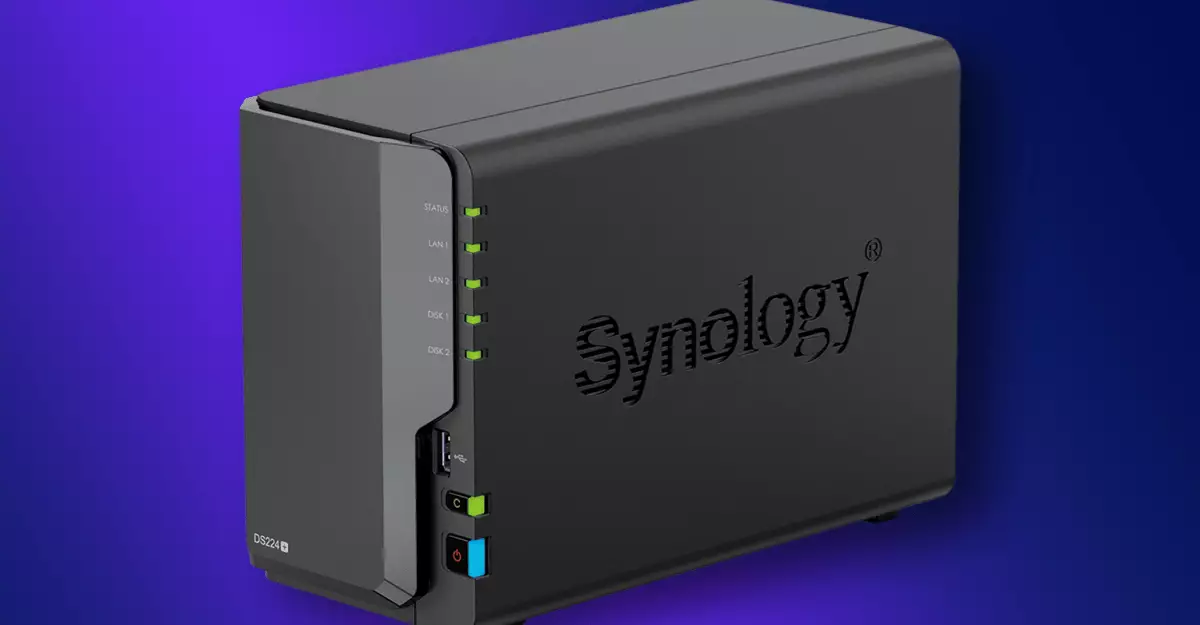Synology, a name synonymous with reliable network-attached storage (NAS) solutions, is making waves in the tech community with its latest announcement regarding restrictions on third-party hard drives. As users of existing devices breathe a sigh of relief knowing their machines will remain unaffected, the forthcoming limitations for new Plus Series models set to debut in 2025 spark a heated discussion about consumer freedom and the implications of proprietary ecosystems. While the intention behind these changes may be rooted in enhancing reliability, they signal a troubling trend towards reduced consumer choice and increased costs.
A Cautious Approach to Compatibility
The new measures, as confirmed in a recent communication from Synology, will drastically alter how users interact with their storage devices. The heart of the matter rests on the assertion that drives pre-approved by Synology will provide a superior experience marked by fewer failures and enhanced performance. This claim, albeit grounded in extensive internal testing, raises eyebrows among tech enthusiasts who have long enjoyed the flexibility of incorporating various third-party options into their systems. Users rely on a vibrant ecosystem of aftermarket drives that offer competitive pricing, performance alternatives, and an endless variety of capacities tailored to specific needs.
Synology’s plans to limit the functionality of its NAS devices to only those drives that meet its proprietary specifications compromise one of the core advantages of the NAS experience: the freedom to customize and adapt storage solutions to fit individual requirements. By narrowing the selection available, the company risks alienating a loyal base that values innovation and variety over restrictive partnerships.
The Silver Lining for Existing Users
While it is reassuring that current Synology users won’t face immediate fallout from these changes, the implications for prospective buyers are significant. The company’s decision not to retroactively enforce these restrictions on devices released prior to 2025 means that existing infrastructures remain intact, preserving the user-oriented versatility that many buyers have come to expect. This was a strategic move on Synology’s part, recognizing that a swift backlash could arise from a sudden limitation on hardware already in use.
However, this transitional period only highlights the pressing question of what long-term strategies Synology is pursuing. As the company positions itself to enforce strict compatibility protocols, are they preparing for a future where user choice is diminished in favor of a more controlled market environment? Encouraging users to invest in Synology’s own products could generate higher margins, but at the risk of undermining their hard-earned reputation for fostering an ecosystem of innovation and user satisfaction.
Consumer Sentiment and the Cost of Restrictions
For many users, the implications of these upcoming changes extend beyond mere compatibility. The ability to mix and match hard drives not only empowers consumers but also promotes competition among manufacturers, leading to better pricing and enhanced product development. Synology’s move, as well-intentioned as it may be, carries the potential of creating a walled garden—one where the company benefits at the expense of the customer.
While the threat of drive failure is presented as a rationale for the restrictions, industry experts argue that an educated user base can often make informed decisions about hardware compatibility without heavy-handed oversight. By imposing restrictions, Synology may inadvertently deter DIY enthusiasts and small business operators who prefer flexibility and value—characteristics that should lie at the forefront of the NAS experience.
The Bigger Picture: Industry Trends
Synology’s latest policy shift is reflective of a broader trend in the technology industry, where companies are moving towards greater control over their product ecosystems. While it’s understandable that manufacturers want to ensure quality and reliability, the accompanying reduction in options can feel more like a step backward in an era that should be embracing user empowerment. The situation presents a dilemma for consumers: prioritize compatibility and performance at the expense of choice, or seek alternatives that align with their values of freedom and flexibility.
As the landscape of technology evolves, it remains to be seen how Synology’s changes will impact their overall market standing. Will the measures enhance customer loyalty through perceived reliability, or will it drive users to competitors who prioritize openness and flexibility? Only time will tell, but the stakes are undeniably high for both consumers and the company itself.

